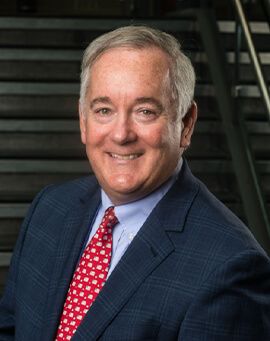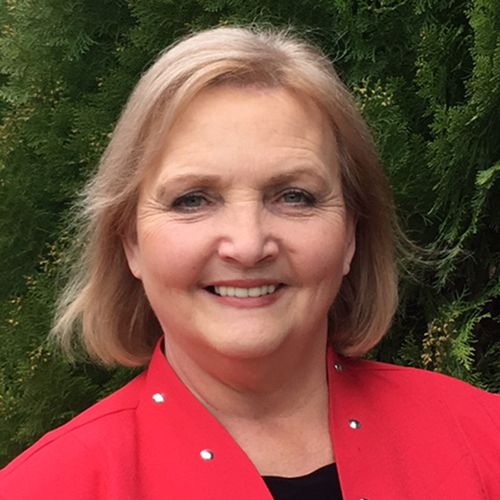‘Patients deserve better’: Hospital leaders describe cuts due to financial crunch
Executives of health systems said they’re reducing services due to losses. Some are closing beds and delaying procedures, while patients are seeing long waits in emergency departments.
Hospitals are projected to lose billions of dollars in 2022, and more than half of all hospitals could be in the red by the end of the year.
Those dire projections come from a report released last week by the American Hospital Association. Kaufman Hall, the healthcare consulting firm, prepared the report and said 2022 figures to be the worst year for hospitals since the COVID-19 pandemic began. And that’s following a difficult first half of 2022. Hospital executives are looking to Washington for help.
“We are now dealing with the aftershocks and the aftermath of the most significant public health crisis in a century,” AHA president Rick Pollack said on a media call Thursday. “America’s hospitals are under severe financial pressure.”
Three hospital executives also participated in the call and explained how the crisis was affecting them: Mike Slubowksi, president and CEO of Trinity Health; John J. Lynch III, president and CEO of Main Line Health; and Peggy Abbott, president and CEO of Ouachita County Medical Center, a rural provider in Arkansas.
The executives represented health systems of various sizes. While they offered some different perspectives, they all struck similar themes.
They are facing daunting financial challenges forcing them to curb services. They’re struggling to find staff, and they all said that their health systems are in untenable situations. Hospitals are also seeing sicker patients, since some delayed care during the pandemic and now need treatment.
Healthcare executives aren’t the only ones worried about hospitals. Fitch Ratings recently described its outlook for nonprofit hospitals and the health sector as “deteriorating.” Kristin Pothier, global lead, healthcare and life sciences deals advisory at KPMG, told Chief Healthcare Executive, “Even our largest health systems have significant cost issues.”
The hospital leaders provided details on how their systems are struggling. As Lynch said, “In my 35 years as a healthcare leader, this is the most fragile I have ever seen the American healthcare system.”
As the leader of a rural healthcare organization, Abbott described the situation in stark terms.
“Hospitals are so critical to everyday life,” she said. “We’ve always been here. There’s an assumption we’ll always be here. I’m not so certain of that anymore.”
‘Closing patient services’
Mike Slubowski, president and CEO of Trinity Health

Based in Livonia, Michigan, Trinity Health operates 88 hospitals and scores of healthcare facilities in 25 states. Even as a larger health system, Slubowski said the system has struggled to fill openings and has had to curb services.
“We're sending up a distress flare about our ability to provide the care our communities depend upon,” Slubowski said.
“The crisis is real,” he said. “The shortage of healthcare workers is nothing like we’ve seen before.”
Facilities across Trinity Health are reducing some services for patients because they don’t have enough staff.
“Facilities in our system are closing patient services,” he said. “We’re closing beds, reducing OR capacity, reducing specialty care capacity like behavioral health, and closing some long-term care sites.”
Across the system, 12% of beds, and 5% of operating rooms are offline, he said. At some Trinity Health facilities, 20-25% of the beds are offline.
Patients are also seeing lengthy wait times in the emergency department, he said. Waits of eight hours in the emergency department are becoming “the norm and not the exception,” Slubowski said. The rate of patients leaving the emergency department without being seen has doubled compared to pre-pandemic times, he said.
Surgeries are being rescheduled and it’s taking days to do blood work. “Backlogs for surgery, imagery and diagnostic services are growing,” he said.
“Our patients deserve better,” he said.
One facility recently had to cut obstetric services due to lack of staff, Slubowski said.
With staff shortages and still plenty of people seeking care, Slubowski said healthcare workers are being pushed to the limit. “Clinical and support staff are overworked and experiencing burnout,” he said.
Rebuilding the clinical staff pipeline will take years, Slubowski said. Healthcare leaders have bemoaned a physician shortage nationwide. Ultimately, Congress and the White House are going to have to build up the nation’s healthcare workforce.
Hospitals “lack the resources to solve the healthcare workforce crisis ourselves,” Slubowski said.
‘Losses are unsustainable’
John J. Lynch III, president and CEO of Main Line Health

Based in the Philadelphia area, Main Line Health operates four acute care hospitals and a rehabilitation hospital.
The system has 1,300 inpatient beds and didn’t close any of them in the height of the pandemic. Main Line has worked to maintain services, but unlike other industries, he said the hospitals can’t exactly reduce hours.
“If we close beds or services, we risk people getting hurt, getting sicker, or people dying,” Lynch said.
Main Line Health has lost $102 million in 2022, even with the support of federal aid, Lynch said. The system lost $20 million in July alone.
“These losses are unsustainable,” he said.
Main Line is struggling to fill staff positions. The system has 1,500 vacant positions, including 400 nursing jobs, he said. “We are experiencing one of the greatest workforce challenges we have ever seen,” Lynch said.
Patients are staying longer in Main Line’s hospitals. Patient days are up 10%, partly because of delays in discharge, insurance approvals or a lack of available beds at post-acute care facilities. The longer hospital stays require more work from staff.
Main Line is seeing more patients, due to the closure of two other hospitals in the area and others that are curbing services. Emergency department visits have increased 15%, and more patients are coming to Main Line’s hospitals to have babies.
Inadequate reimbursements from Medicare and Medicaid patients, a problem for years, is exacerbated by the added pressures the system is facing, Lynch said. Medicare is paying 75 cents for every $1 of care at Main Line, and Medicaid is reimbursing 60 cents per dollar, he said.
Since he’s seen hospitals in the Philadelphia region shut their doors, Lynch said he fears that others may follow suit. “I am concerned we are going to see more healthcare providers close,” he said.
At the same time, hospitals can’t simply stop investing in their facilities, Lynch said. “Consumers have higher expectations than ever,” he said.
'Heart-wrenching decision'
Rural hospitals have been struggling for years, said Abbott, the CEO of Ouachita County Medical Center in Camden, Arkansas. But the COVID-19 pandemic is threatening the survival of more rural hospitals.
Peggy Abbott, CEO of Ouachita County Medical Center

Since 2010, 136 rural hospitals have closed, according to an AHA report issued earlier this month. The hospital association and other healthcare leaders said more rural hospitals could shut down unless policymakers take action. Two key lines of federal aid for rural hospitals are scheduled to expire at the end of September, unless Congress intervenes.
“The small independent hospitals are challenged as never before,” Abbott said.
And she said that includes her own medical center.
“I have never seen an operating margin as low as we’ve currently experiencing at Ouachita County Medical Center,” she said.
“We have never had a wide margin anyway,” she added. “We have a nonexistent margin today.”
The system’s revenues are down 4%, even as they deal with a 12% increase in expenses and a 9% rise in salaries.
“Our cash on hand is lower than I've ever seen,” Abbott said.
“We are bleeding red,” she said.
While their costs have risen, she said reimbursements from payers “have not increased accordingly.” The other health leaders offered similar assessments.
Given their financial distress, Abbott said Ouchita recently made the “heart-wrenching decision" to close a rural health clinic. The clinic had lost money in the past, but given Ouachita’s struggles, it could no longer justify keeping the clinic open.
Staffing has also become more difficult, she said. The system is struggling to retain enough nurses, along with respiratory therapists and radiologists. “There is absolutely a shortage of staff availability,” she said.
At Ouchita, Abbott and key leaders have agreed to reduce their own salaries to help cut costs.
While Abbott is a leader and advocate for smaller, rural systems, she said the financial difficulties of all hospitals, including larger systems, should trouble everyone.
“When we see major system hospitals posting losses, that should sound the alarm among the powers that be,” Abbott said.
Telehealth faces a looming deadline in Washington | Healthy Bottom Line podcast
February 12th 2025Once again, the clock is ticking on waivers for telemedicine and hospital-at-home programs. Kyle Zebley of the American Telemedicine Association talks about the push on Congress and the White House.